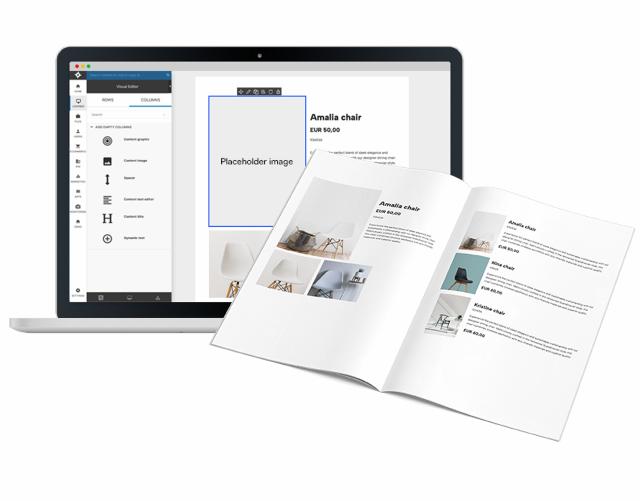Blog
Custom Catalogs Made Simple: A Guide to Creating Campaign-Specific Materials
This guide breaks down the steps to craft engaging, brand-centric campaign materials, ensuring your products shine and your story resonates. Perfect for marketers looking to elevate their promotional efforts.
Crafting a catalog that captures the essence of a campaign and presents your products in the best light is not a small job. Yet, with the right tools and approach, it can be a smooth, even enjoyable process.
DynamicWeb Publications simplifies the creation of custom catalogs, allowing you to tell your brand’s story with style and substance.

Step 1: Define Your Campaign Goals
Before diving into the design, clarify what you want to achieve. Is it to showcase a new product line, highlight seasonal offerings, or support a specific marketing initiative? Your goals will guide the content and design of your catalog.
Step 3: Choose a Template or Start Fresh
Whether you prefer to work from a template or design from scratch, DynamicWeb Publications offers a user-friendly visual editor. Select a layout that aligns with your brand identity and campaign theme, ensuring consistency across all materials.
Step 4: Customize Your Layout
Now, the fun part—customization. Drag and drop elements to create a layout that tells your story. Incorporate high-quality images, engaging descriptions, and consistent branding to create a visually compelling catalog.
Below you can see a walk-through video of our Project Manager Jennifer Johansen navigating through the Publications and explaining the possibilities of the add-on.
Step 5: Enrich with Storytelling
Every product has a story. Use this opportunity to weave narratives around your products, making them more than just items in a list. Storytelling can create emotional connections and give context that elevates the customer experience.
Step 6: Review and Revise
Review your catalog for consistency, accuracy, and brand alignment. Make sure product information is up-to-date, and prices are correct. It’s crucial that the catalog is free of errors before distribution.
Step 7: Easy to Generate and Distribute
With everything in place, use DynamicWeb Publications to save your catalogs as a PDF. You can create different versions for various audiences or languages, all with just a few clicks. Then, distribute your catalogs through the appropriate channels, whether in print or online.
Step 8: Analyze and Adapt
After your catalog is out in the world, gather feedback and analyze its performance. Use these insights to refine future editions, ensuring that each catalog is more effective than the last.
Conclusion: Your Brand, Beautifully Presented
Creating custom catalogs need not be a daunting task. With DynamicWeb Publications, you can present your brand and products in a way that's not only visually appealing but also aligned with your marketing goals.
DynamicWeb Publications
Simplify workflows for editors, sales teams and marketers

Automate the process of producing professional PDF documents like price lists, catalogs and datasheets in just a few clicks!
Easy to use, no-code visual editor let's you create documents fast and at scale.